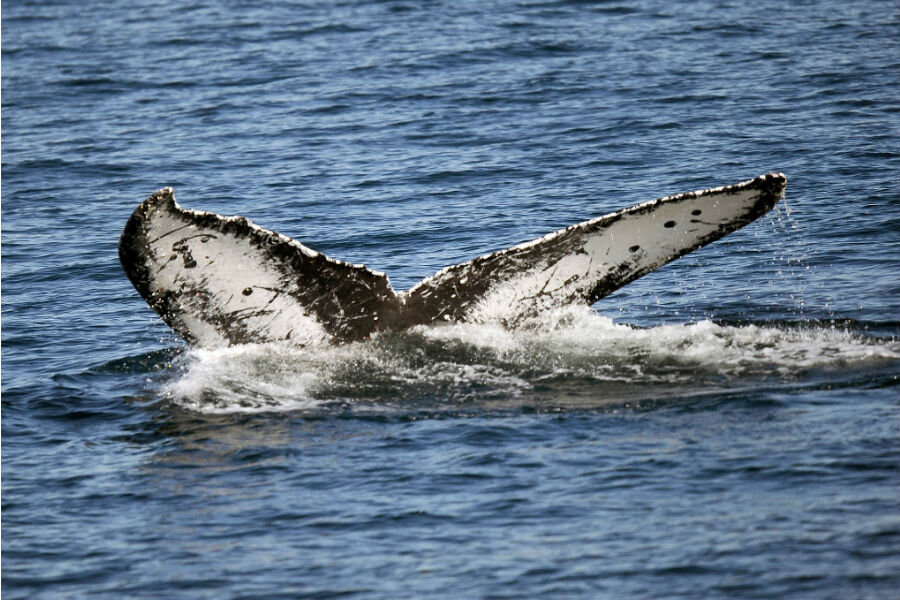How did whales get so big?
Loading...
| Washington
Scientists think they have answered a whale of a mystery: How the ocean creatures got so huge so quickly.
A few million years ago, the largest whales, averaged maybe 15 feet long. That’s big, but you could still hold a fossil skull in two hands.
Then seemingly overnight, one type of whale – the toothless baleens – became huge. Modern blue whales get as big as 100 feet, the largest creatures ever on Earth. Its skull is now bigger than a minivan and could probably fit more than five people inside, researchers said.
“We really are living in the time of giants,” said study co-author Nicholas Pyenson of the Smithsonian Natural History Museum. “Why is that?”
And it happened “in the blink of an evolutionary eye,” which makes it harder to figure out what happened, said Graham Slater at the University of Chicago, lead author of the study in Tuesday’s Proceedings of the Royal Society B.
Their study has proposed an answer: Ice ages in the last 3 to 5 million years started it, changing the oceans and food supply for whales.
The researchers used fossil records of the smaller whales to create a family tree for baleen whales – which include blue whales, humpbacks, and right whales. Using computer simulations and knowledge about how evolution works, they started filling in the gaps between the small whales and the modern super-sized version. They keyed in on a time period when the whales got huge and smaller whale species went extinct, somewhere between a few hundred thousand years ago and 4.5 million years ago.
They concluded that when the size changes started, the poles got colder, ice expanded and the water circulation in the oceans changed and winds shifted. Dr. Slater and Dr. Pyenson said cold water went deep and moved closer to the equator and then eventually bubbled back up in patches rich with the small fish and other small critters that whales eat.
Before that, whale food was spread out, relatively easy to get at. Now, they are giant buffets amid hundreds of miles of whale food deserts. That’s why you can see lots of whales in the summer in California’s Monterey Bay, Slater said.
Baleen whales, which have no teeth, feed by gulping tremendous amount of ocean, filtering out the water and eating the critters they capture. Toothed whales, like sperm whales, hunt individual fish or squid, so the ocean changes that made food less evenly spread out didn’t affect them as much. But baleen whales hunt schools of fish or swarms of krill, Pyenson said.
“If you are a whale, the easiest way to take advantage of dense but sparsely available resources is to get big,” Slater said. “If you are big, you basically can get more miles to the gallon.”
Baleen whales went from 15 to 100 feet in about the same time as humans evolved, he said.
Olivier Lambert at the Royal Belgian Institute of Natural Sciences, who wasn’t part of the study, calls it “a really convincing scenario.” But he said the lack of fossils in certain time periods is an issue.
As oceans warm from man-made climate change, the seas will be more like it was when the whales were smaller and they will have a more difficult time surviving, Slater and others said.






